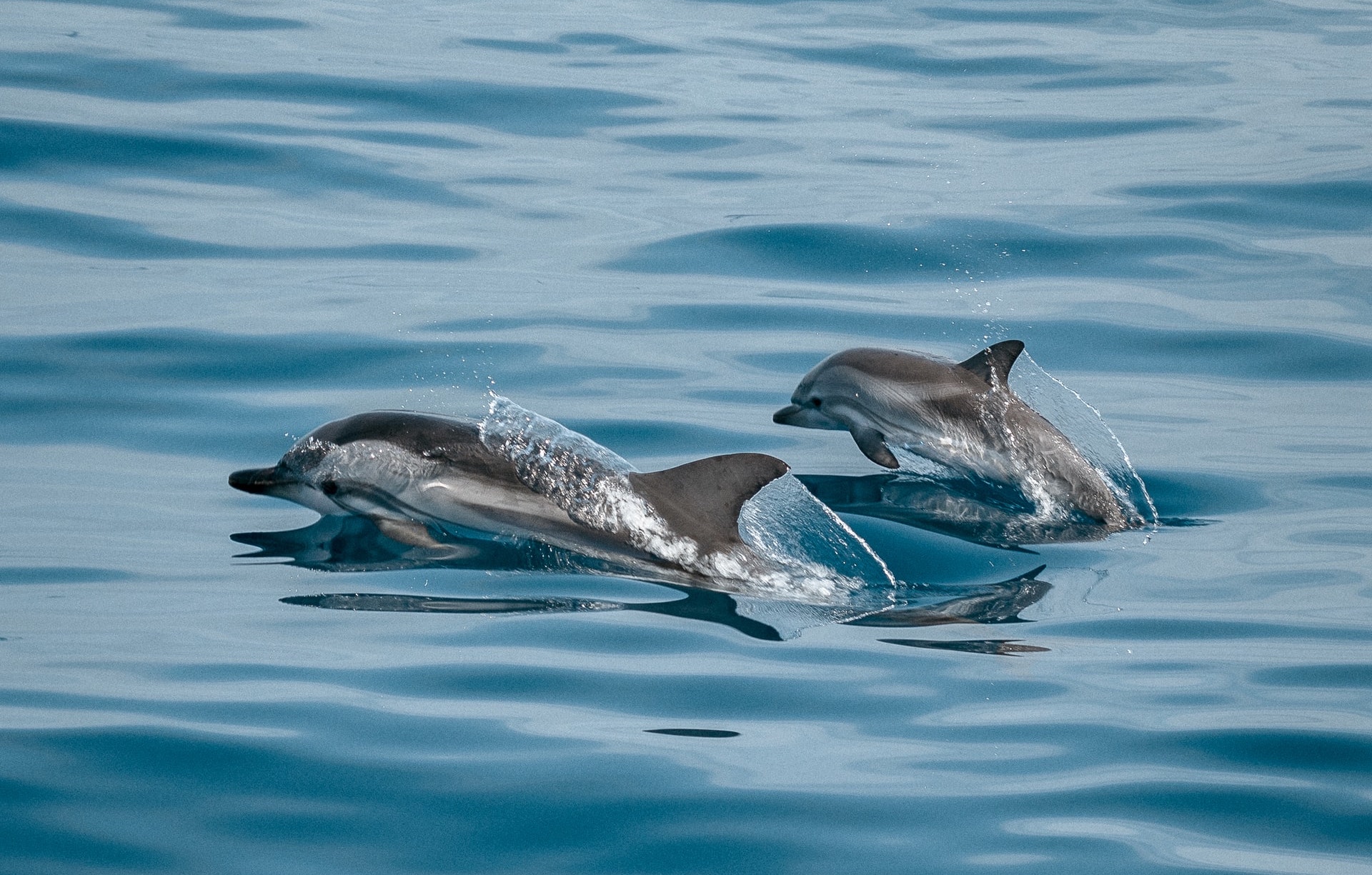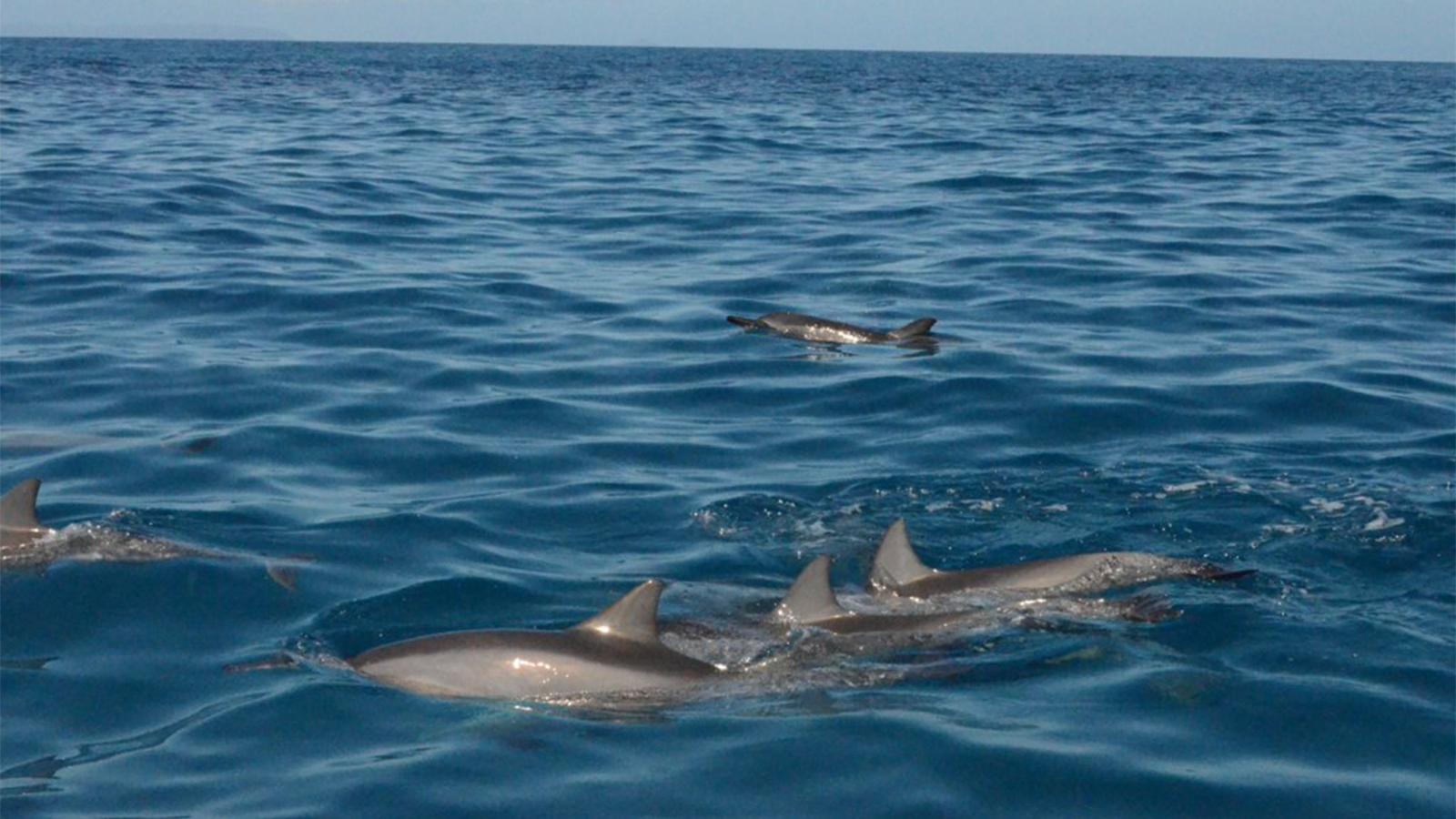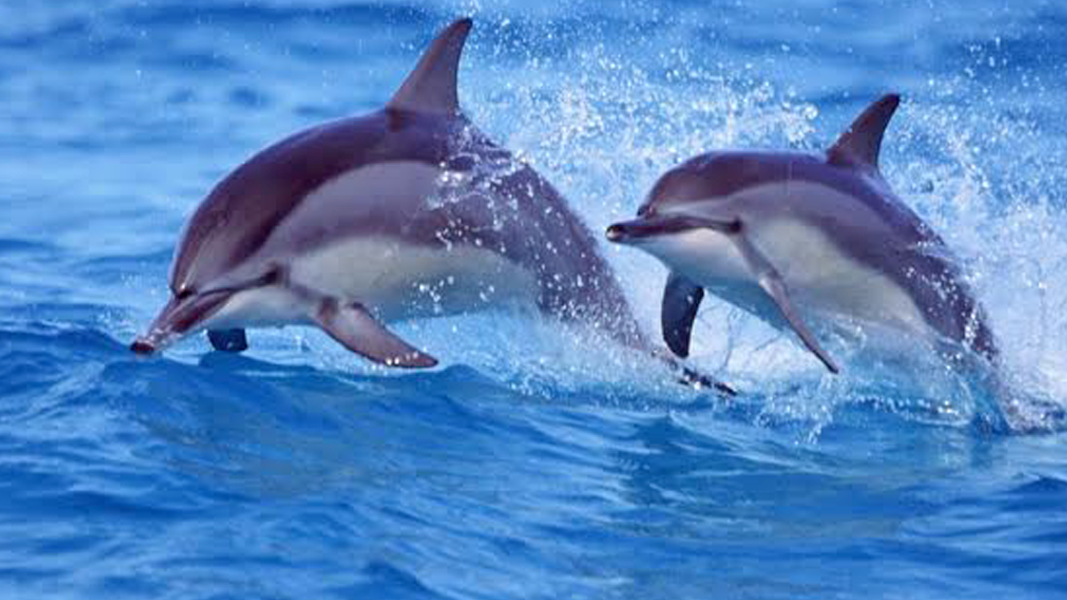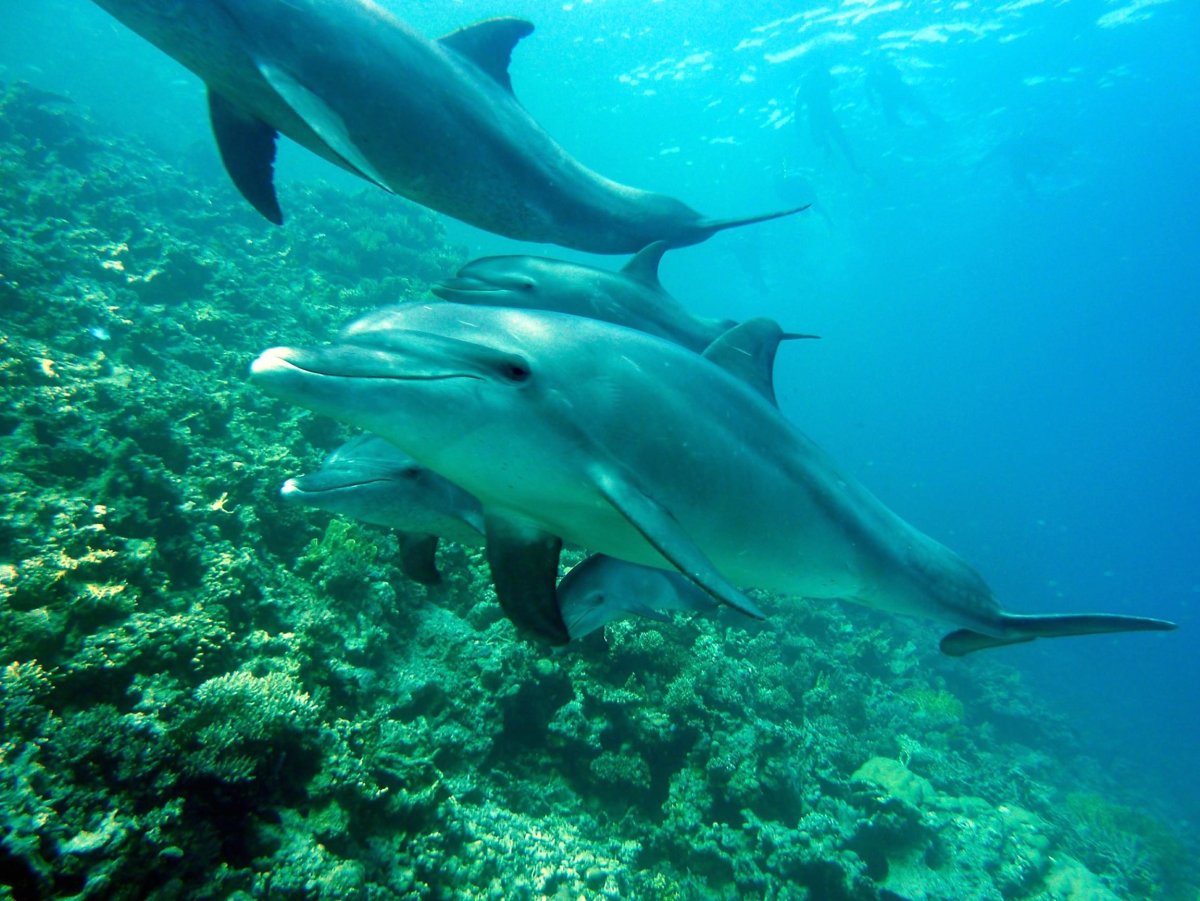Dolphins are some of the most beloved creatures on the planet. After all, what isn’t to like about these seafaring cetaceans? They’re highly intelligent. They make adorable noises. They’re friendly to humans. They even like to surf. But beyond these crowd-pleasing theatrics, dolphins also boast impressive physiological capabilities and exhibit an array of mind-boggling behaviors. Here are six fascinating facts you may not know about them.
Dolphins Call Each Other by Their Names
The meanings behind much of the dolphin repertoire of squeaks, grunts, and clicks remain a mystery to marine biologists, but they do know that certain sounds represent an identifying call. For example, the common bottlenose dolphin develops a unique melodic pattern of whistles that makes it recognizable to others within earshot, even when murky underwater conditions distort the voice of the sender. Furthermore, recent research has shown that dolphins “address” each other by imitating the whistles of close companions and family, suggesting a capability for sophisticated interaction rarely seen outside the human world.

Dolphins Turn Off Half Their Brains to Sleep
As oxygen-dependent mammals that reside in water and voluntarily control their breathing, dolphins simply cannot let themselves slip into a state of complete unconsciousness. As a result, they experience what's known as unihemispheric slow-wave sleep, in which only half the brain sleeps at a time and the other remains awake at a low level of alertness.
Dolphins typically float motionless or swim slowly near the water's surface when in this state, with the eye opposite the resting side of the brain remaining closed. And while people and dolphins have very different slumbering habits, dolphins typically get about four hours of slow-wave sleep for each side of the brain in a 24-hour period, which matches up with the doctor-recommended eight hours of shut-eye per night for humans.

Dolphins Have Remarkable Powers of Recuperation
Dolphins possess something of a superpower when it comes to recovering from major tissue injuries. Dr. Michael Zasloff shed light on this ability in a 2011 letter to the Journal of Investigative Dermatology, in which he described studies of dolphins that had withstood significant flesh loss from shark attacks. These animals not only stemmed the blood loss and sustained no infections on the open wounds, but they also regenerated the torn-out tissue to regain their full-body contour within approximately 30 days. The dolphins displayed no sign of distress throughout the process, suggesting that a naturally triggered form of pain relief accompanies their extraordinary healing capabilities.

Dolphins Have Three Stomachs
While dolphins are cunning hunters, they forgo any semblance of dining manners by wolfing down their food without chewing. Thankfully, they have a three-chambered stomach designed to handle the rapid intake. The easily stretchable forestomach is primarily used to store the food, the main stomach is where the majority of digestion takes place, and the pyloric chamber completes digestion and regulates passage into the small intestine. This streamlined process supports the bottlenose dolphin's average daily intake of 25 to 50 pounds of fish, squid, and crustaceans.

The U.S. Military Uses Highly Trained Dolphins
Since 1959, these smart, adaptable deep divers have served Uncle Sam in the Navy's Marine Mammal Program, alongside a cadre of equally patriotic sea lions. Dolphins are typically taught to handle two tasks: They use their inherent sonar capabilities to pinpoint and mark the location of underwater mines, and they help apprehend uninvited swimmers by tagging the trespassers with a buoy that drags them to the surface.

Dolphins Teach Each Other to Use Tools
To further prove just how intelligent these creatures are: Bottlenose dolphins in Shark Bay, Australia, have been observed using marine sponges to protect their snouts when rooting around the seafloor for small fish. Mothers pass on this nifty foraging method to their offspring, though females usually show far more interest in learning than males. Additionally, scientists have observed dolphins in this region engaging in peer-to-peer learning for another technique known as "shelling." The dolphins chase fish into empty giant snail shells, push the shells to the surface, and then tip the waiting prey into their mouths.

